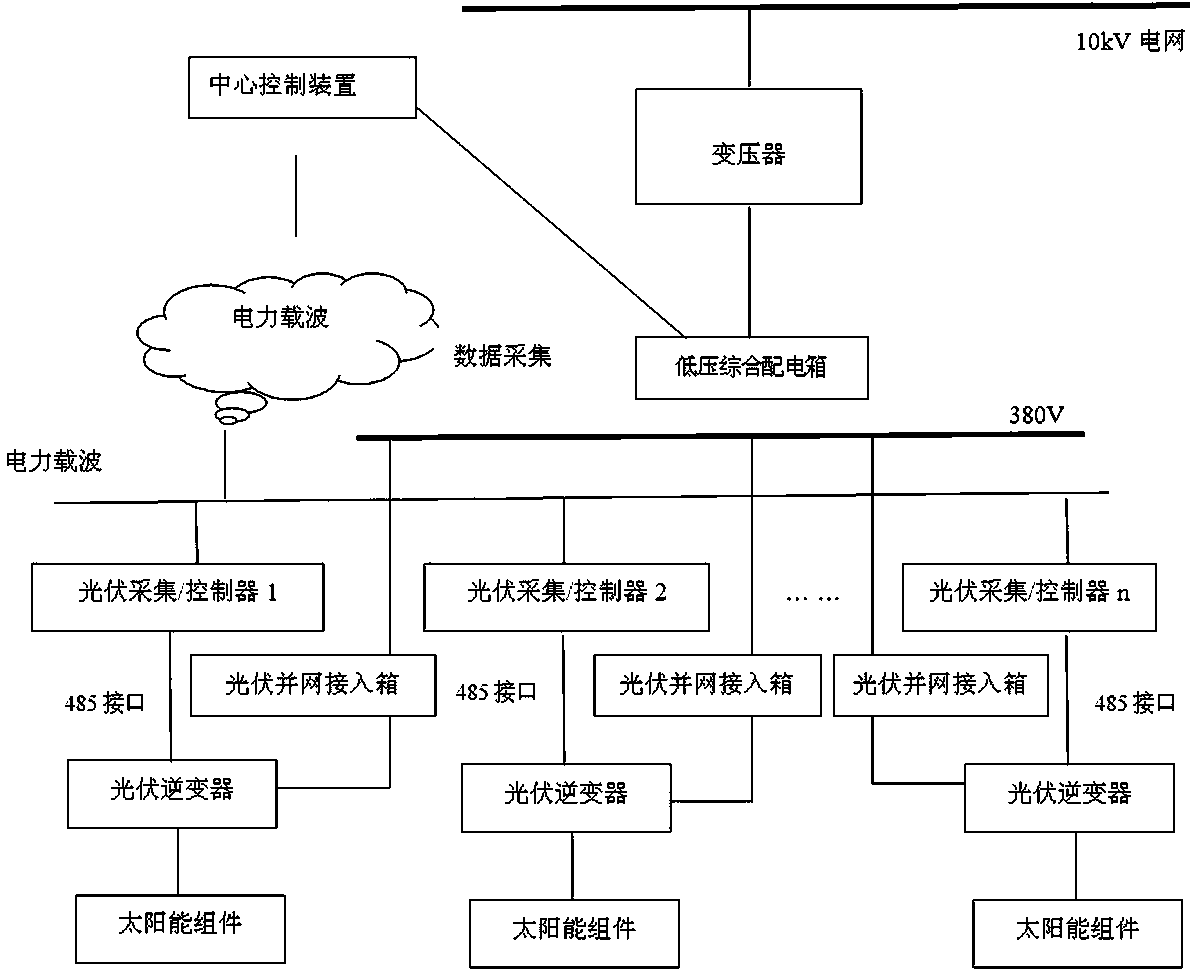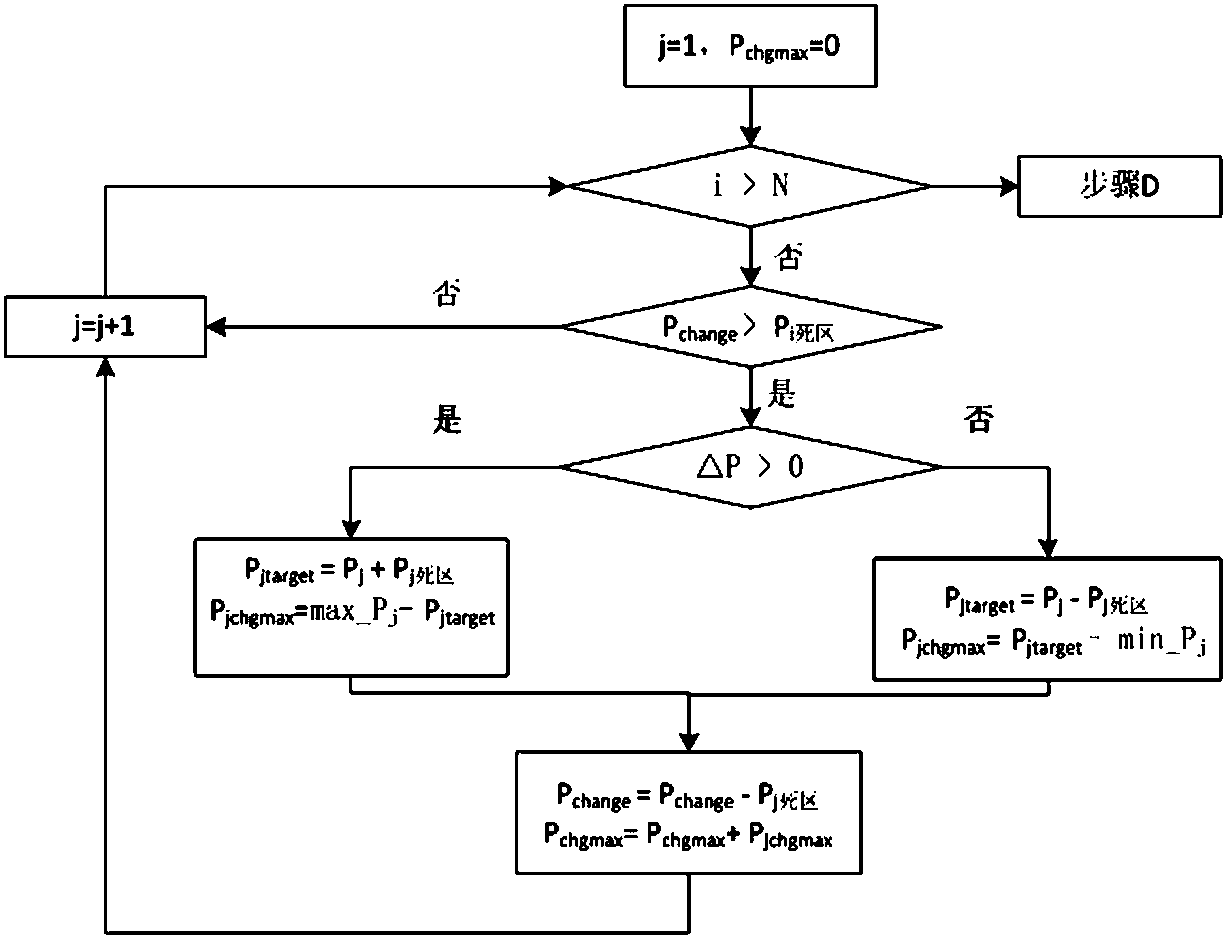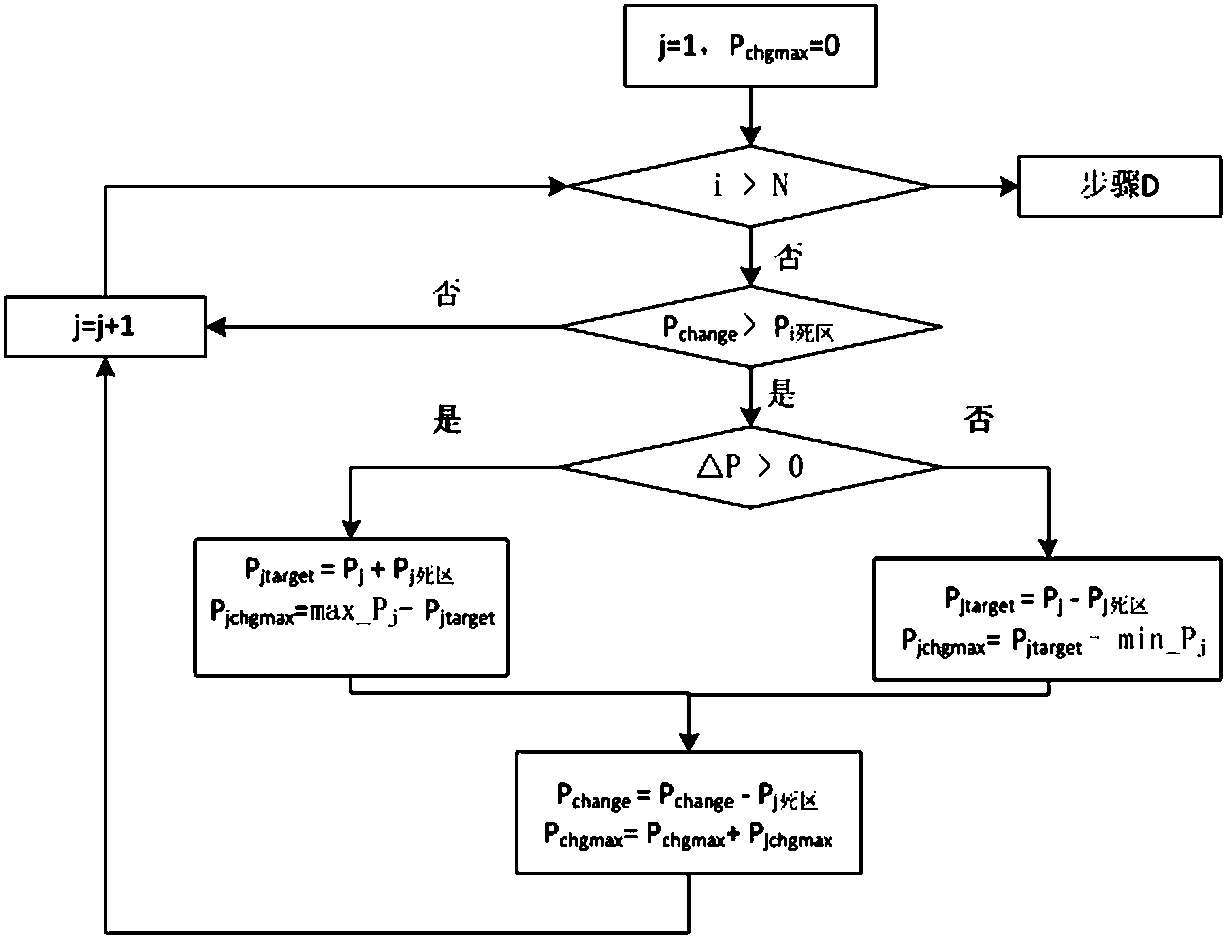Method for flexible power generation based on distributed photovoltaic power station area protection system
A distributed photovoltaic and photovoltaic power station technology, applied in the direction of photovoltaic power generation, electrical components, circuit devices, etc., can solve the problems of insufficient illumination time, limited transformer capacity, and the inability of transformers to reach the maximum consumption capacity, etc.
- Summary
- Abstract
- Description
- Claims
- Application Information
AI Technical Summary
Problems solved by technology
Method used
Image
Examples
no. 1 Embodiment
[0052] see figure 1 The photovoltaic power station includes solar modules, a photovoltaic inverter connected to the solar module, and a photovoltaic grid-connected access box connected to the photovoltaic inverter. The photovoltaic grid-connected access box converts the power generated by the photovoltaic power station into the inverter The adjusted value is uploaded to the transformer, and then uploaded to the grid after voltage regulation by the transformer. Due to the limited capacity of transformers, the grid-connected generation power is limited. At present, in most areas, the number of photovoltaic power stations that can be installed in this area is determined based on the ratio of transformer capacity to the full capacity of photovoltaic power stations. However, in practical applications, photovoltaic power stations in operation There are often off-grid situations, and most of the lighting time cannot be fully emitted, which leads to the inability of the transformer to...
no. 2 Embodiment
[0070] The difference from the first embodiment is:
[0071] Step B1 includes the following steps:
[0072] Adjust the current generating power of the grid-connected photovoltaic power station upwards, the total adjustment amount ,
[0073] B1-1: Add all grid-connected photovoltaic power stations to the collection of photovoltaic power stations that intend to increase power generation. There are N photovoltaic power stations in the collection.
[0074] B1-2: j=1,
[0075] B1-3: According to the following formula, calculate the target adjustment power of the jth photovoltaic power station to be increased in power generation ,
[0076] (1),
[0077] if ,but , , N=N-1, remove the photovoltaic power station from the set of photovoltaic power stations that intend to increase power generation, go to step B1-2; otherwise, go to step B1-4,
[0078] B1-4: j=j+1, if j>N, execute step C, otherwise, go to step B1-3.
[0079] The core of this embodiment is: if , then th...
no. 3 Embodiment
[0081] The difference from the first embodiment is that the dead zone processing is required. The dead zone means that when the control quantity (input quantity) changes in a small range, the actual output quantity does not necessarily change. This range is called the dead zone. The purpose of passing the dead zone is to make it easier to calculate the target power. If only proportional calculation is performed, the obtained target variable power may be smaller than the dead zone, resulting in unsuccessful regulation. The specific method is:
[0082] A. The central control device receives the operating parameters of grid-connected photovoltaic power plants and transformers, and calculates the current adjustable active power of the transformers , , where P max Indicates the maximum power of the transformer, Indicates the sum of the current power of grid-connected photovoltaic power plants, , j=1, 2...N represents the sequence of grid-connected photovoltaic power plants...
PUM
 Login to View More
Login to View More Abstract
Description
Claims
Application Information
 Login to View More
Login to View More - R&D
- Intellectual Property
- Life Sciences
- Materials
- Tech Scout
- Unparalleled Data Quality
- Higher Quality Content
- 60% Fewer Hallucinations
Browse by: Latest US Patents, China's latest patents, Technical Efficacy Thesaurus, Application Domain, Technology Topic, Popular Technical Reports.
© 2025 PatSnap. All rights reserved.Legal|Privacy policy|Modern Slavery Act Transparency Statement|Sitemap|About US| Contact US: help@patsnap.com



